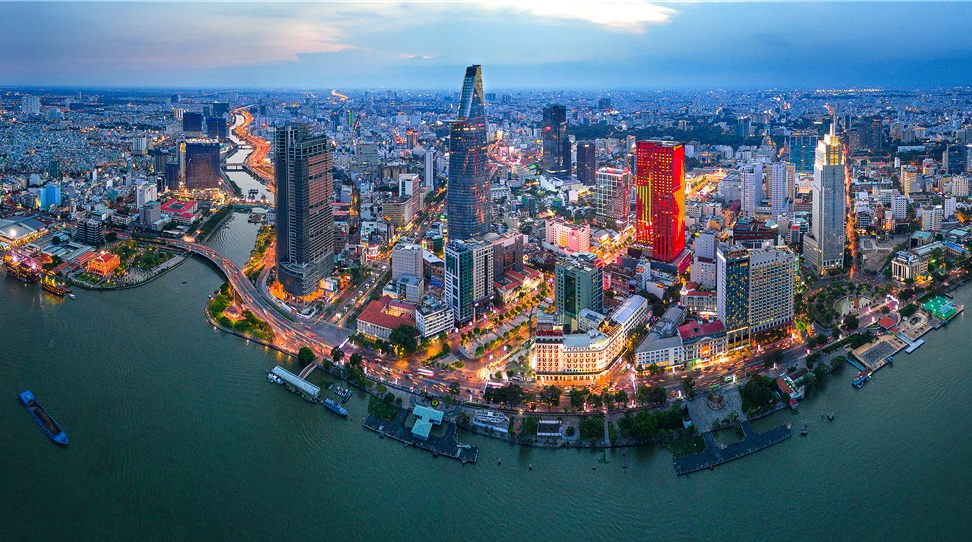Vietnam among top regional expansion destinations for ASEAN companies
 |
| Vietnam is among the top expansion destinations for ASEAN companies looking for growth opportunities within the bloc |
The majority of ASEAN companies focusing on intra-regional opportunities expect robust business growth in the region over the next 12 months (99 per cent of respondents expect growth in production and 96 per cent anticipate growth in revenue). This is according to a survey commissioned by Standard Chartered for its "“Borderless Business: Intra-ASEAN Corridor”, a strategic report that explores high-potential opportunities for cross-border growth within the region.
Access to the large and growing ASEAN consumer market (69 per cent), access to a global market enabled by a network of free trade agreements (59 per cent), and availability of abundant and skilled workforce (49 per cent) were among the most important drivers for expansion across the region, according to the senior executives of the surveyed ASEAN companies.
In addition, with the Regional Comprehensive Economic Partnership (RCEP) expected to attract more investment into ASEAN, all respondents said that they are planning to increase their investments over the next 3-5 years.
In terms of target markets within ASEAN, 80 per cent of the surveyed respondents are focusing on expanding in Singapore to capture sales and production opportunities, followed by Thailand (60 per cent) and Vietnam (59 per cent). As ASEAN companies look to invest across the region, Singapore is considered the most desirable market for companies to set up sales and marketing, corporate functions regional headquarters (79 per cent), and their regional R&D/innovation centres (73 per cent).
The survey also shows companies recognising a wide range of risks in the region. The top three identified risks are the COVID-19 pandemic or other health crises (75 per cent), geopolitical uncertainty and trade conflicts (60 per cent), and the slow revival of the economy and the drop in consumer spending (49 per cent). Furthermore, the respondents also agreed that adapting their business model to industry practices and conditions within ASEAN (67 per cent), building relationships with suppliers and adapting supply chain logistics (66 per cent), as well as understanding regional regulations, payment methods, and infrastructure (53 per cent) are the most significant challenges they anticipate in the next 6-12 months.
To drive resilient and rebalanced growth in ASEAN and to mitigate these risks and challenges, the surveyed executives identified entering new partnerships and joint ventures to increase market presence (53 per cent), driving sustainability and environmental, social, and governance (ESG) initiatives (53 per cent) and executing digital transformation programmes (52 per cent) as the most important areas for their companies to focus on. To support their growth, these companies say they are seeking banking partners with strong cash management capabilities (52 per cent), one-stop corporate financing and capital-raising services (52 per cent), and extensive trade financing services (47 per cent).
Heidi Toribio, regional co-head, Client Coverage, Asia, Corporate, Commercial and Institutional Banking, Standard Chartered, said: “ASEAN is core to Standard Chartered’s business strategy. As the only international bank with full presence in all 10 markets in the region, we believe we play a critical role in enabling our clients to seamlessly trade and invest across the 10-nation bloc. The findings of this report clearly validate the trends we are observing among our clients and we continue to invest in our capabilities to meet their evolving needs.”
Michele Wee, CEO, Standard Chartered Vietnam, said: “Vietnam continues to offer appealing business and investment opportunities given its strong fundamentals – robust economic growth, a sizeable domestic market, low labour costs, an abundant workforce, free trade agreements, and strategic location. As an international bank with 117 years of history in Vietnam, Standard Chartered has deep local knowledge to support internationalising companies’ cross-border growth aspiration and provide them with the right solutions that meet their financing and operational needs.”
What the stars mean:
★ Poor ★ ★ Promising ★★★ Good ★★★★ Very good ★★★★★ Exceptional
Related Contents
Latest News
More News
- Strengthening supply chains through trade promotions and customs reform (December 24, 2025 | 14:00)
- PM orders investment model for North–South high-speed rail (December 22, 2025 | 17:43)
- LS Eco Energy to invest in Vietnam rare earth sector (December 22, 2025 | 17:31)
- Government moves to establish International Financial Centre (December 21, 2025 | 21:00)
- Vietnam's IFC to target global investment flows (December 21, 2025 | 18:00)
- Two national hospitals expand capacity with new facilities (December 20, 2025 | 09:00)
- Ha Tinh breaks ground on major Vingroup industrial and energy projects (December 19, 2025 | 18:24)
- EVN launches major power infrastructure projects nationwide (December 19, 2025 | 18:17)
- VAL inaugurates second production line to meet domestic animal feed demand (December 19, 2025 | 16:37)
- Sun Group pioneers urban tram system in Phu Quoc (December 19, 2025 | 15:00)

 Tag:
Tag:


























 Mobile Version
Mobile Version